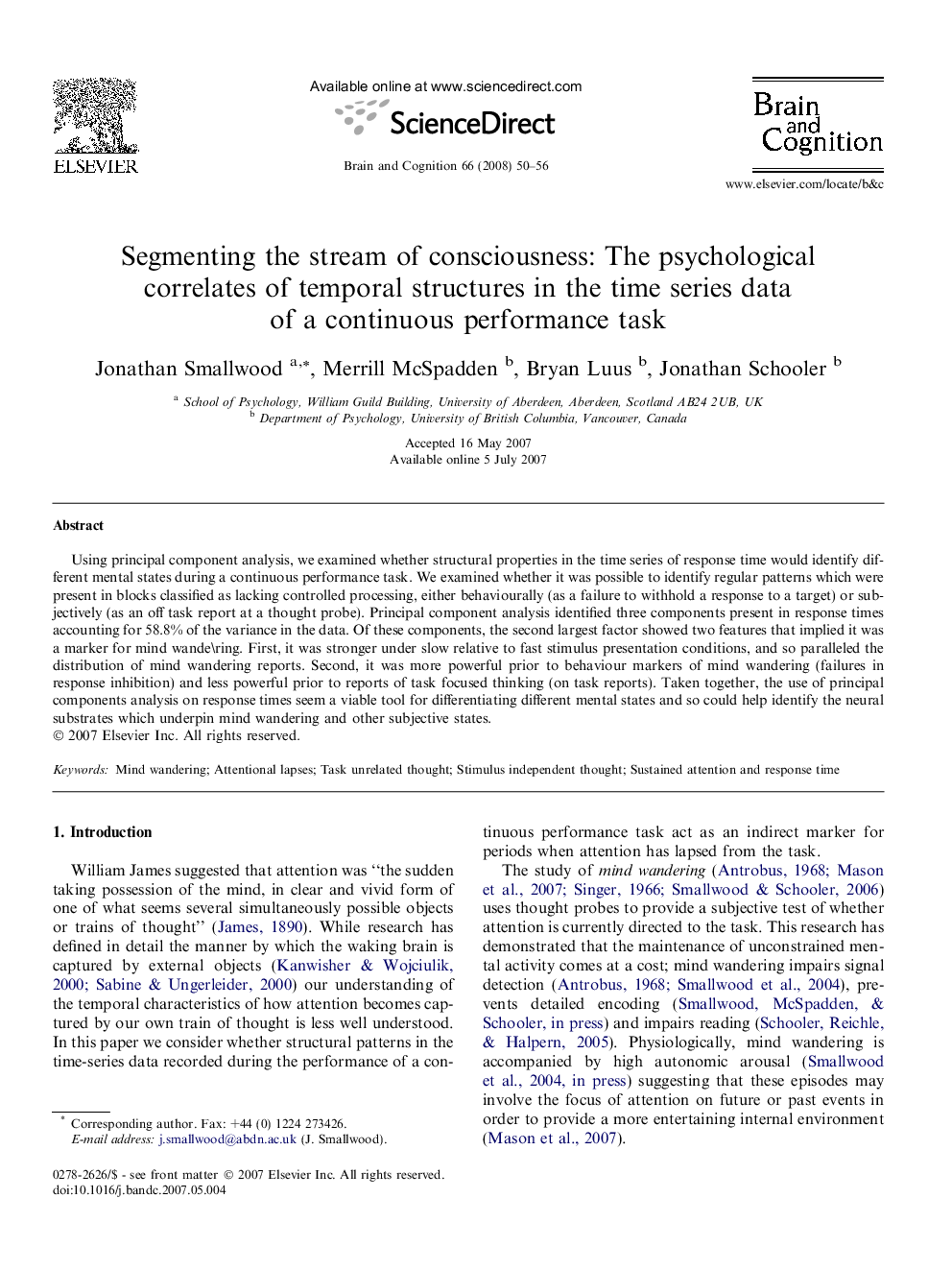| Article ID | Journal | Published Year | Pages | File Type |
|---|---|---|---|---|
| 924361 | Brain and Cognition | 2008 | 7 Pages |
Using principal component analysis, we examined whether structural properties in the time series of response time would identify different mental states during a continuous performance task. We examined whether it was possible to identify regular patterns which were present in blocks classified as lacking controlled processing, either behaviourally (as a failure to withhold a response to a target) or subjectively (as an off task report at a thought probe). Principal component analysis identified three components present in response times accounting for 58.8% of the variance in the data. Of these components, the second largest factor showed two features that implied it was a marker for mind wandering. First, it was stronger under slow relative to fast stimulus presentation conditions, and so paralleled the distribution of mind wandering reports. Second, it was more powerful prior to behaviour markers of mind wandering (failures in response inhibition) and less powerful prior to reports of task focused thinking (on task reports). Taken together, the use of principal components analysis on response times seem a viable tool for differentiating different mental states and so could help identify the neural substrates which underpin mind wandering and other subjective states.
